October 2015
How to Plan & Run a Successful Crowdfunding Campaign (part two)
- by Alyson Shane
Welcome back to the second instalment of the Crowdfunding Crash Course recap series!
In this series we'll be covering the lessons that the participants of the Crowdfunding Crash Course project shared with us, all summed up in a few handy posts (with some input from yours truly, of course.)
If you think you have an amazing idea that you have to share with the world, it might seem like crowdfunding is the easiest way to get your message out to a lot of people. Spoiler alert: it isn't. A successful crowdfunding campaign is rarely one that you can "set and forget" and takes about as much planning and preparation as a run-of-the-mill marketing campaign.
Honestly though, I didn't fully grasp any of this until I started this project. This is because a good crowdfunding campaign, like most things that are done well, looks pretty effortless.
This realization is why I decided to start doing recap posts - to help dispel some myths about the process, and to break down the steps to take to make sure that your campaign is every bit as successful as it can be!
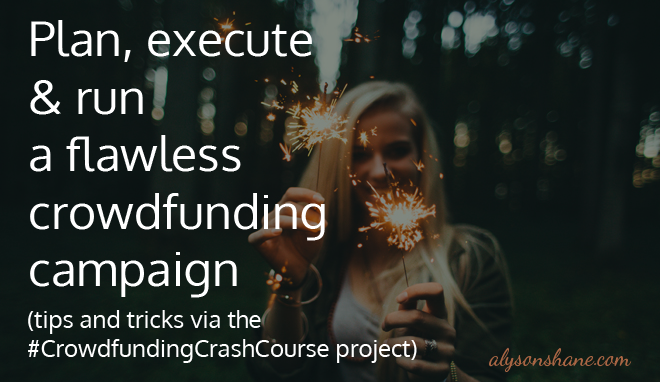
Do Your Research
Luckily for us, neither Kickstarter nor Indiegogo, the two most popular crowdfunding platforms, automatically remove campaigns once they've ended. This is great news for you, a budding crowdfunder, because it means that there's a wide variety of projects to explore and research. If you're lucky, there may even be a few similar to what you're planning to do, which can be great opportunities for some research.
For example, if you're planning a crowdfunding campaign to raise money for your nonprofit which will develop a product to be used in developing countries, you'd be doing yourself a disservice if you didn't take a look at the SolarPuff Kickstarter campaign page, and that's just one that we know about! A quick search for "nonprofits" will bring up a variety of campaigns for you to draw inspiration from.
The best part about the fact that all those older campaigns are still out there is that it gives you an idea as to how different campaigns managed to meet their funding goals... or if they didn't.
Some things to check for are:
- The quality and length of of the video
- Message and story
- The strength of the pitch (or the "ask")
- The kinds of perks offered at the start
- If any perks were added any later into the campaign
- If the campaign met it's funding goals (or if it didn't, how close it came)
Crowdfunding, as an industry, is unusually transparent because everything is out there in the open for all to see. Campaigns, by their nature, are public, and the information is there for you to learn from. All you have to do is take the time to do your research!
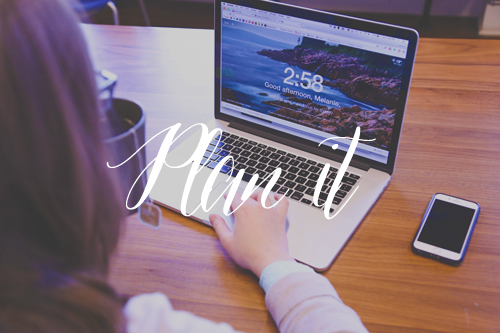
Pick the Best Platform to Suit You
The two major crowdfunding platforms out there are Kickstarter and Indiegogo, and because the interviews I did for this project happened to all be on either platform, these are the two we'll focus on right now.
Kickstarter is an "all or nothing platform" which means that if you set your crowdfunding goal as $100,00.00 and you only manage to raise $95,000.00, you don't get to keep any of it. In fact, when someone donates to your campaign their credit card isn't charged until your campaign reaches it's goal.
Indiegogo has what's called a "flexible funding system," which means that as backers donate to the campaign, the organizers get that money in real time. It also means that they get to keep the money that's been backed so far, regardless of whether or not you reach your goals. Indiegogo also allows you extend the life of your campaign, and change your funding goals halfway through your campaign.
Kickstarter dwarfs Indiegogo in a few key ways: it attracts more traffic, it features a "Projects We Love" newsletter and feature area on their site which can propel a floundering project well past it's target goal, and it attracts more pledges, and pledges in higher amounts.
However, Indiegogo has it's strengths: it's had almost 100,000 more successfully completed campaigns than Kickstarter; this is because when a campaign is about to expire and hasn't reached it's funding goal, many people pull them from Kickstarter before the end-date.
Ultimately the platform you choose is up to you! Do your research and invest your time in the platform that you think will do the following:
- Allow you to provide the kinds of rewards you'd like
- Has funding options that you're comfortable with
- Provides you with ways to promote your campaign
Work With a Team
One of the striking things about the interviews I did for this project was the sheer amount of man-power that goes into planning, executing, and managing a crowdfunding campaign.
Running a campaign takes a lot of time and effort. You have to plan before your launch, manage the marketing leading up to and during the campaign, communicate with funders, answer questions, and any variety of things that might pop up or be unique to your project.
According to Indiegogo, crowdfunders who worked with teams of three or more raised over three times as many funds as campaigners who chose to go at it alone. This is likely because having more people on your team means you have an extended network of people to share it with, and potential funders!
It never hurts to have each member of your team promoting your campaign on their own individual social media feeds, and to their friends and family; even more incentive to surround yourself with a great team of people to help your campaign be a success!
Communicate Consistently
Nothing makes a backer feel like they wasted their money more than a campaign that goes dark the moment you donate. Besides that, you don't want people to forget about your campaign the second they give you money, do you? Of course not, which is why communicating is so, so important.
One of the most effective things you can do to keep things fresh is to keep updating your campaign page after you launch. This is essential! Regardless of the type of project you're trying to fund, you want to keep your backers in the loop every step away (this plays into what i was saying earlier about crowdfunding being an extremely "transparent" industry).
This means updating your page when you've hit important milestones, have press mentions, or new perks that you've added after the campaign launch (more on that in the next instalment, I promise!).
Updates to your campaign will automatically be emailed to anyone who contributes, making this step a total breeze and the easiest way to communicate with your backers post-launch. It also helps your backers know that you appreciate them and their efforts in helping you succeed.

On average, most crowdfunding campaigns post at least four updates over the course of their campaign, and these posts could cover a wide variety of topics, such as:
- Important funding milestones (30%, 50%, etc)
- New perks and incentives
- Profiles of that terrific team you've put together
- Behind-the-scenes looks at your process, product development, etc
- Press coverage
- and more!
Staying in touch with your backers is key, and can often help put you over the top of your funding goals during those final, stressful days of your campaign. If you send an update to your backers which reads "only $200 to go until we've met our goal!" and that backer is emotionally (and financially, now) invested in seeing your campaign succeed, they're much more likely to forward the email to others and ask friends to donate to that awesome, super-cool campaign, too!
Is That It?
Heck no! There's still more to cover, so make sure you check back to the final instalment of the Crowdfunding Crash Course Recap Series
This post is part of a series. For all of the Crowdfunding Crash Course interviews and summary posts, visit the Projects section of my site!
How to Plan & Run a Successful Crowdfunding Campaign (part one)
- by Alyson Shane
The Crowdfunding Crash Course project has reached it's end. I've interviewed over a dozen crowdfunders about a variety of topics, ranging from art projects, to tech hardware, to books, to board games, music and more.
To say that this has been a learning experience is putting it lightly. I've learned so much over the course of these interviews, and am excited to be able to share what I've learned with you, especially now that the interview portion of the project has reached completion.
Over the next few posts we'll discuss, in-depth, some strategies and steps to take to help you with the following:
- Gauging interest and pre-campaign community-building
- How to stay organized and on track
- Maintaining momentum during your campaign
- Telling an emotionally compelling story
- and more!
Ready? Let's get started!

Build a Community
One of the most common responses that I heard during the course of this project was "build your community first."
While building your community factors into your marketing and outreach, I want to touch on it, separately, because one-time funders might not do much to improve your campaign's visibility. Sure, they may donate and help you reach your funding goal, but if they don't talk to their friends about it or share it on social media, they aren't being as helpful to your campaign as they could be.
Communities form online when like-minded people get together based on a shared goal, vision, or interest. In the case of your campaign, your goal is to create a community of supporters dedicated to seeing your campaign succeed.
This goes beyond your mum, your partner and your best friend. In order to blow past your goals and leave the competition in the dust, you'll have to create an engaging, compelling campaign which mobilizes people to actively support and share it with everyone they know. More on how to do all of this below:
Plan Your Marketing & Outreach
Crowdfunding platforms aren't listing services, and the success and results you'll see will be directly proportional to the amount of time, attention, and planning you put into promoting your campaign elsewhere online.
Meg Athavale, who used Indiegogo to fund the LUMO Interactive Projector, a gaming and display system that includes a projector, a sensor that captures motion data, and an Android processor, used tools like Gleam, Thunderclap, and Facebook ads to raise awareness. She also went "old school" and attended events and conferences where she met potential investors, and secured a spread story in the Canadian newspaper the Globe and Mail, which helped increase awareness.
Some tools to use to keep in mind while planning your campaign's marketing strategy are:
- Hootsuite, Buffer, or a similar content-scheduling app
- Facebook and Twitter Ads
- MailChimp, for newsletters and campaign updates
- Thunderclap, for outreach
- Gleam, to run competitions to raise interest
Focus on the Pitch and Story
Once you get people to your page, the most important part of crowdfunding is your initial pitch, and your message.
It's important to remember the context of crowdfunding: you're competing with countless other crowdfunders on a single website, wether that's Kickstarter, Indiegogo, or whatever platform you're using. You're not just competing against other crowdfunders, but on the internet at large. The only thing stopping potential funders from navigating away from your page is your message.
How can you craft a message that makes people stay? You have to tell a great story. A great story doesn't just tell people what you're doing, it should also tell them how their support helps make a difference. Focusing on appealing to the "why" of your campaign, and engage your funders on an emotional level.
One of my favourite examples of this was SolarPuff: A Unique Little Solar Light. Stacy Kelly, who was interviewed about the project, mentioned that when the Nepal earthquake hit, they were able to integrate the SolarPuff into relief efforts. For Stacy's funders, knowing that their donations were going to develop and distribute a product that would help people in need made them feel good, which helped increase engagement and donations.

Additionally, in the case of SolarPuff the nature of the product -an eco-friendly, reusable, solar-powered light which could be used for emergency relief aid- earned them a spot on Kickstarter's "Projects We Love" list, which skyrocketed their funding thanks to the exposure.
It's unlikely that Kickstarter would have featured the SolarPuff if they didn't have the emotional appeal, strong pitch, and story behind it. Having a product and a story with emotional appeal always helps.
Build An Email List
A strong email list is one of the best and most powerful tools at your disposal to promote your campaign on an ongoing basis, from before it starts to after it's finished. Before your campaign begins, set up a landing page on your site which features a video (more on that below), a call to action, and a field where people can sign up for newsletter updates to the project.
Having an email list is the most effective way marketers have to promote something, because when a person signs up to receive regular updates they're giving you the keys to the most personal place on the internet: their email inbox. You now have a direct line of communication with that person, which they've willingly given to you.
Having email newsletters means that you can communicate on the status of your campaign before it starts, when it's launching, and important milestones and successes as they occur, as well as calls-to-action to donate. A strong email list also is a very good indicator that there's interest in your product and idea, which can be a great way to gauge interest before you begin investing all that time and energy.
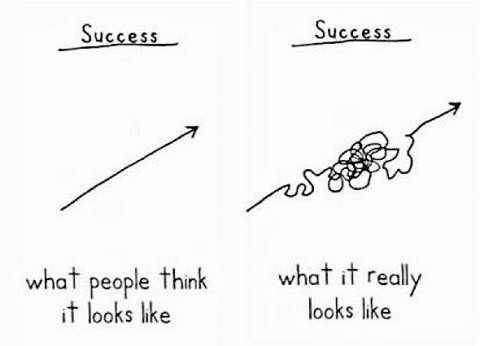
Put Effort Into Your Video
Videos are your best tool to communicate with your audience, and to help them understand your message, goals, and how your campaign will make a difference in their lives. Your video is the single best tool at your disposal to connect with your audience, pull them in, and hook them emotionally.
Things to focus on include:
- Image quality
- Music (something simple and generic is best)
- Shots of the product in action
- Members of your team
When producing your video, shoot two different endings: one before the campaign launches, which you can use to promote the campaign before you start, and another for when the campaign is live.
The first ending should invite people to sign up for email updates on your upcoming crowdfunding campaign, and should be posted on social media, your website, forums, and other areas where people can find it 2-6 months before your campaign launches. This will give you lots of lead-time to build an email list, and provides you with a strong piece to convey your message early on.
The second ending should be used when you post your video to the campaign page. This ending should invite people to contribute, re-iterate your pitch, goals, and message, and include a call to action for people to share the campaign on their own social feeds.
Tell Your Story
Tell your story before you ask for money.
In your text and in your video, if you've made one, focus on your story and your enthusiasm for your project. Introduce the members of your team, and let them explain why this project is important to them.
Don't worry too much about being wooden and formal - people like to laugh, and if your story can make them smile, or even laugh, they'll relate to you and your goals much more easily. Your funders want to feel like they can relate to you, and your cause, and being your silly, enthusiastic self will help tremendously.
Explain to your audience why funding your particular project will make them feel good and how they'll see a return on investment, either by being the first to access a new technology or product, supporting an artist they love, or by participating in a large-scale event like relief efforts which will help other people.
Is That It?
Of course not! But that is it for this post. Crowdfunding is a complex and fascinating new way to promote ideas and projects and raise money, and there's a lot more to discuss, but this post is getting a bit long in the tooth and nobody likes walls of text.
With that in mind, stay tuned for pt2 of the Crowdfunding Crash Course recap, coming soon!
This post is part of a series. For all of the Crowdfunding Crash Course interviews and summary posts, visit the Projects section of my site!
How Digital Assistants Could Replace Search Engines
- by Alyson Shane
Back when I was a kid, the term "personal digital assistant" usually referred to one of these:

(remember Palm Pilots? No? Just me?)
Nowadays, your personal digital assistant (or PDA, for short) refers to something much more literal, though much more incorporeal. Apple's Siri and the super-popular Google Now (which I use every day and love) are just two examples of modern-day voice recognition software which allows us to speak our commands and questions into our smartphones and get real, tangible results.
I've been using Siri for a while, but my recent foray into Google Now's voice recognition has me thinking about the future of personal digital assistants, and what this means for the future of search engines and SEO.
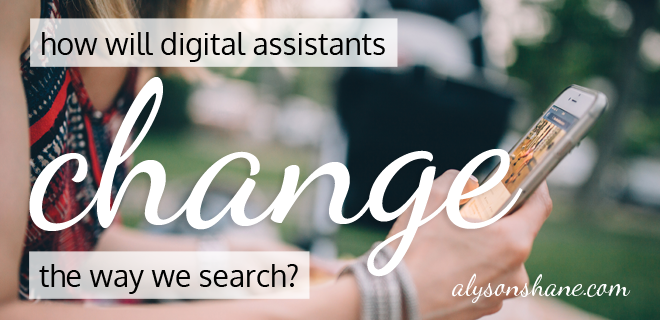
Our Searches are More Sophisticated
Back in the early days of Google their algorithm was pretty simple: keywords typed into the search box were matched with keywords on websites, and links were counted and mixed in order to determine a ranking system.
These days search engines are much more sophisticated, using a process called semantic search to analyze the intent behind a search query, not just the search query itself, and to rank the most appropriate results based on both of those factors (this is why tactics like keyword-stuffing work against modern websites.)
Similarly to the early days of search engines, digital assistants are becoming more sophisticated all the time. Newer versions of Siri struggled with interpreting spoken words for garbled speech, and generally being unhelpful. However, recent updates to Siri and Google Now have extremely accurate voice recognition capabilities and are quickly learning to adapt to issues like thick accents in a way that, previously, they were unable.
Integrated Internet & Wearables
Okay, so I've told you why digital assistants are being used more often, but why would anyone be using them in place of a conventional search engine?
One of the major differences is that our technology has become interwoven with our everyday lives - once upon a time, not too long ago, the Internet existed as a separate place that we "dialled into" at clunky desktop computers, opened a browser, and typed in our search query. These days, almost all of our devices (smartphone, desktops, laptops, etc) are connected to the internet automatically, making the Internet an integral part of our lives.
The biggest reason for this, of course, are smartphones. The introduction of the iPhone and the subsequent waves of mobile devices featuring web browsing, mobile apps, and a variety of other features means we're always connected to the Internet.
Additionally, as "wearables" like the Apple Watch, the Android Wear, and a variety of other kinds of "smart watches" become increasingly more popular, the need for better and more accurate digital assistants to replace typing searches into a tiny screen will likely increase as well.
What all of this this means is that the Internet isn't some place that you physically go to in order to find information; it's all around us, all the time, and it's becoming available on increasingly smaller screens than ever before. It also means that because we're constantly searching for things on-the-go, a browser-based website might not be the best or most efficient way to look for it.
The Effect on SEO
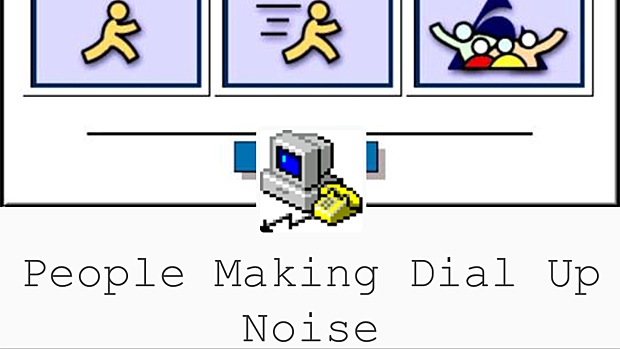
As the ways in which we search for and find information change, so too will the ways that search engines find, organize and display results. Below are a few ways that I think voice-based searching and the increasing popularity of digital assistants could influence how we search:
Voice-Based Queries
We've already discussed this increase a bit earlier in this post, but if the trend continues we'll start to see spoken queries become longer and more conversational. What this means for bloggers, marketers and other people like me is that having "conversational content" (like what you're reading right now) will become the ideal kind of content to match up with colloquial queries.
This also means that current SEO strategies will have to become more general, and will be less reliant on keywords or short phrases than they currently are.
The Rise of Instant Answers
We're already started to see the beginning of the instant-answer phenomenon with Google's Knowledge Graph, which is a system that provides answers to questions and queries without forcing users to visit a specific website like Wikipedia or IMDB.
If you're not familiar with how Google's Knowledge Graph works, and it's purpose, this quote from super-smart Neil Patel should do a better job of explaining it than I can:
The search engine is primarily designed to collate data about everything on the face of the earth, sync the data with their search algorithm, and make the information accessible quickly and easily, no matter what platform the searcher uses.
Digital assistants will take this further, giving users clever, concise answers rather than redirecting them to a Wikipedia page, or a recipe page with six paragraphs and fourteen photos before the actual recipe. This means that websites may see a dip in traffic and visibility.
Geographic Relevance
Personal aside: this has been one of my favourite things about Google Now. I love having an app that knows where I am and can tell relevant information based on my past queries without having to search for it. Heaven!
Anyway... Since digital assistants are generally used on the go, local businesses can benefit by offering content specific to that geographic region to try and increase foot traffic into their brick-and-mortar stores.
This also opens up interesting new avenues for optimization, where stores could optimize their information so that it gets mentioned by digital assistants more frequently, or when customers are close by.
Meeting Immediacy
Especially as voice recognition becomes even more commonplace and sophisticated, I think we'll see people start to turn to their digital assistants for more immediate and complex needs. So we'll be saying more complex commands like "find me an East Indian restaurant open past 8pm tomorrow night" as opposed to searching "East Indian restaurants in Winnipeg" and going through a list of restaurant hours, taking up a bunch of time.
This means that the demand for tutorial-like content will likely increase, which will have an impact on content creators to adapt the way that they write, or how they share audio and video-based content. I'm looking at you, 1000+ word long recipe articles.
What Does All This Mean?
To quote the ever-wise Bob Dylan "the times, they are a-changin'" and technology is continuing to shape how we live our lives at an increasingly aggressive pace.
While it may take some time for digital assistants to replace search engines, I do think that voice recognition is the way of the future, and that we'll eventually see most forms of traditional text-based search engines become phased out. This means that content creators, marketers, and other digital-types will have to adapt our strategies in order to continue to get noticed.
What are your thoughts on digital personal assistants and SEO? Tell me in the comments!
Having a Family of Choice
- by Alyson Shane
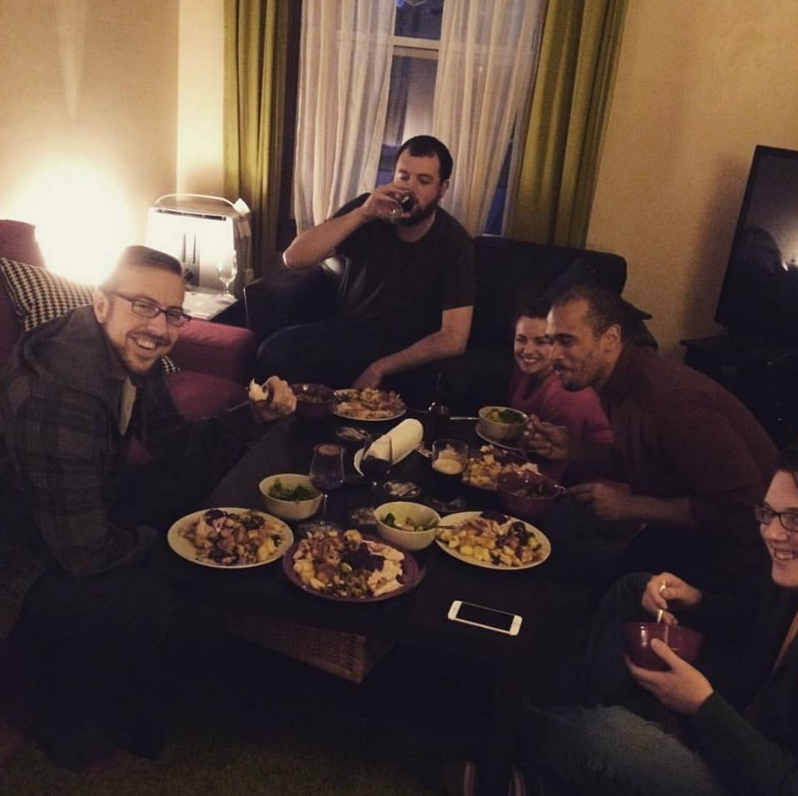
Yesterday I spent my Thanksgiving surrounded by some of the people who matter most to me. We made dinner, had drinks, shared stories, and otherwise enjoyed each other's company. It was a terrific way to wrap up the long weekend, and I'm still glowing just thinking about how much fun it was.
This is the first Thanksgiving I've had without my family in a long time, and as we move into a season where, traditionally, we spend more time with our families, I wanted to talk a little bit about creating a Family of Choice, and how it's helped me.
Some backstory
For those of you new to this blog, I haven't communicated with my parents since last winter. Shortly after the new year I decided to seek out therapy and to start to work through a variety of anxieties and issues related to self-worth that were the result of my relationship with my mom, and one of the things my therapist suggested was to take some space from my mom while I focused on healing.
Needless to say asking for space didn't go over very well, and the fallout was that now neither of my parents speak to me. As a result I don't really speak to any of my extended family, and have very limited contact with my two younger siblings.
I don't talk about it very often because it's a difficult topic to discuss; most people have pretty solid relationships with their families, and even the ones who have rocky ones generally maintain some level of contact with their families despite regular drama and other issues that families deal with.
On being 'No-Contact'
I think that one of the hardest things that adults face is whether or not we should keep negative people in our lives. For many of us, there's that one relationship that we know we shouldn't maintain, but we do so because (often) we feel guilty about not maintaining it.
Think about that one "friend" who you don't really like, but always get invited around because they've always been there, or that family member who you despise but still invite to Christmas because you "have to."
Stop the madness! You never "have to" do anything that upsets you or makes you feel uncomfortable.
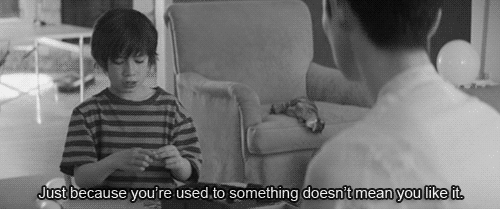
If someone is making you feel bad, guilting you, or otherwise upsetting you on a regular basis, you don't have to include them in your life. Getting to be a part of your life is a privilege, not a right.
For example, I have a family member whose way of "helping" was to challenge me on every single thing I did - I shudder to think about the hours I spent defending all of my decisions, from who I was dating, to my career choice, to where I wanted to go on vacation. It was insanity! I'd see their name pop up and my blood pressure would rise just thinking about the argument that was going to ensue.
If someone in your life is making you feel this way -your parent, friend, colleague, whatever- you have a right to ask them to stop. If they respect you, they will. If not, then it's okay to not politely explain why they don't get to be privy to your life and decisions anymore.
Creating a Family of Choice
"Family of Choice" is just what it sounds like: the people you choose to have around you in your life, and who are close to you. These people differ from your "Family of Origin" which are your blood relatives; mum, dad, siblings, etc.
I've heard lots of people make comments like "friends aren't the same as family" which I think is total BS. I really feel like many of us use "they're family" as an excuse to put up with meddling, guilt, and other nonsense that we wouldn't otherwise put up with from anyone else. How insane is that?
Being blood relatives doesn't (and shouldn't) make maintaining one relationship more important than maintaining others, and just because someone isn't related to you by blood, that shouldn't diminish the importance of the relationship.
Being close to your Family of Choice is just as good as being close to your Family of Origin, if your situation permits it - there's no law stating that just because you weren't born into the same family, that you can't care about someone the same way you would a blood relative.
Creating and cultivating my Family of Choice has been a really important part of navigating this whole No-Contact experience for me. Knowing that I have a handful of close friends whom I can turn to in a crisis helps alleviate feelings of loneliness or isolation which I occasionally feel when thinking about my present circumstances.
In addition to being a support system, a healthy Family of Choice can also serve as a benchmark for other relationships in our lives. Why would we want to spend time talking to or putting up with people who make us feel bad, or tear us down, when we have a support system of great people we can reach out to instead?
Why does all of this matter?
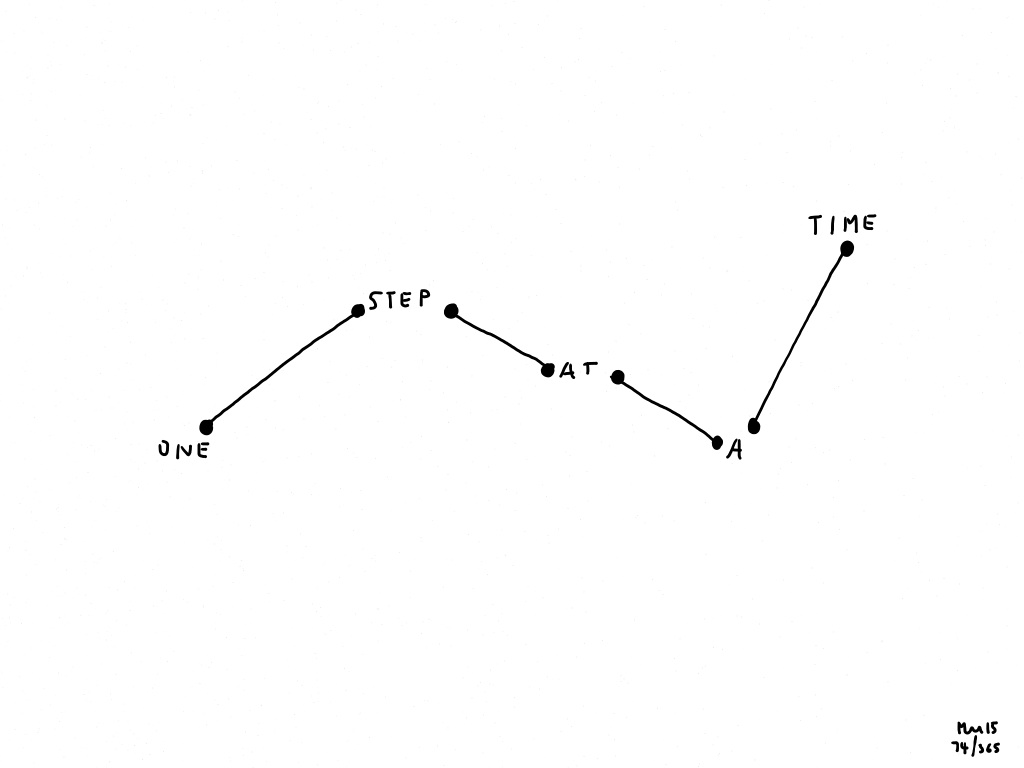 It matters because we have a right to be happy, and to surround ourselves with kind, positive people who care about us and want to see us succeed.
It matters because we have a right to be happy, and to surround ourselves with kind, positive people who care about us and want to see us succeed.
Most of the time this is pretty easy to do; lots of us are lucky enough to have defaulted into families who are supportive, and manage to find great friends, partners and colleagues whom we care about, and who want the best for us, as well.
However, it's easy to start to fall into the habit of allowing negative people to start to infiltrate our lives, and to start giving them too much weight and authority over our thoughts and our actions. This can be especially true if we've grown up in a family, or have that one family member, who makes us feel like shit. We put up with it because we're used to it.
Creating a Family of Choice means that you get to choose the people you want to share your life and experiences with. It means taking control over your own happiness, and ensuring that everyone who touches your life does so in meaningful and positive ways.
I didn't write this post to encourage you to cut out your family or anything like that, but I wanted to write something to let you know that we can look to outside sources (friends, partners, colleagues, mentors, etc) to help us feel fulfilled and loved. It's hard, and it's a weird process, but it does work and it's worth doing if you aren't getting the supports that you need from your Family of Origin.
We all have the tools at our disposal to build the kind of families and lifestyles that we want to have - what that looks like is entirely up to you.
Have you ever struggled with letting go of a difficult relationship? Was it a friend, family, or loved one? Tell me in the comments, or if it's too personal, send me an email - I'm always available to chat.
How to Stay Connected as a Busy Couple (Plus an Exciting Giveaway!)
- by Alyson Shane
When you're in a long-term relationship it can be easy for the magic to fade away. Conversations rife with sparks eventually become lacklustre discussions and you find yourself spending more time less time lookin' fine and more time in that baggy old ugly T-shirt you got from your work several years ago (team building exercise '99!)
Staying connected can be enough of a challenge for most couples, but when you're trying to maintain a healthy, happy relationship while also balancing a crazy professional career, side projects, spending time with friends and family, and all the other good stuff that comes with being a responsible, driven adult, it can seem even more taxing to spend time keeping your relationship kickass.
Since the past few months have been such a whirlwind for both John and I, I figured I'd take a moment on a laid-back (almost) long-weekend Friday afternoon to reflect and share some insight into what's worked for us so far:

Learn Your Love Language
A few weeks ago I was browsing Reddit, and I came across a thread where one of the posters talked about couples' "love languages," and how understanding how both parties in a relationship express their affection is a key component to you both feeling loved.
Here's an example: I like to clean, and one of the ways that I demonstrate my love is by taking care of chores like laundry, dishes and etc which I know John doesn't like doing. I show my love by making his life easier. John, on the other hand, shows his love by telling me every day, singing songs to me and holding my hand, giving me hugs, being silly, etc.
Many people in my situation would just assume that he's lazy, or doesn't care about helping me, but what's actually going on is that I'm basing my expectations for his behaviour on how I behave, not how he behaves. It's important to understand and recognize this distinction.
When we take the time to understand how both parties express their love it makes communicating a million times easier, and nobody feels neglected or put-out by their partner's behaviour.
The test I'm talking about is called The 5 Love Languages and you can take it here.
Practice Active Listening
When the day is over and both your heads are swimming with information from your respective busy days, it can be tempting to want to zone the hell out and not dive into a deep discussion. However, it's important to ask your partner how their day went and actually listen to the words coming out of their mouth.
It can be tempting to nod your head and give the token "yeah, that's good" reply, but (spoiler alert) people can tell when you're placating them, and it's pretty disrespectful to your partner to tune them out while they tell you about what happened that day.
The best way to avoid the classic "mmhmm, that's nice dear" reply is to practice active listening. Active listening is when you listen to someone and then reply by repeating back what you've heard, either by re-stating or paraphrasing what you've heard in your own words.
Not only does this show your partner that you give a shit about what they've said, it also helps clarify the message and meaning, and make sure there's no confusion.
If you're feeling overwhelmed at the end of the day (as I sometimes am) it's totally okay to say "hey, I need some mental downtime, can we chat in a bit?" and then go for a run, or take a bubble bath, or read, or whatever you need to do to de-frag your brain. As long as that communication is there and your partner feels listened to and valued, that's what counts.
Schedule Some Downtime
One of the most difficult things for super-busy couples to manage is getting some freaking downtime. When you're both managing extremely demanding careers, going out to events several times a week, working on side projects, and maintaining a social life, it can be extremely difficult to find time to just hang out.
Admittedly, I really struggle with having "downtime" which doesn't really help. My idea of downtime is usually doing projects around the house, writing, or doing other things that need doing.
Sometimes though, you have to set aside some time and just hang out with each other and enjoy each other's company. This could mean anything: read books together, watch a movie, make dinner, play video games... whatever classifies as "downtime" for you, do that and do it as often as you can.
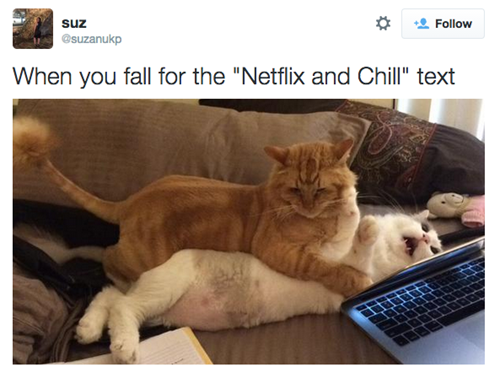
Hook Up (aka "Netflix & Chill")
I don't want to get into too much racy stuff here, but staying physically connected is such a huge part of any romantic relationship, and unfortunately it's one of the first things that seems to evaporate the second couples start to get overwhelmed in other areas of their lives.
I've experienced this personally, and can attest to the fact that when your physical relationship starts to wane, eventually so too does your attraction to your partner, and eventually any romantic interest you may have had goes away as well. At that point you might as well call it quits because you're basically just friends at that point (or roommates, if you live together.)
So the next free evening you have available schedule some time with your partner put on a movie that you've both seen a million times before (you know the one) and "chill."
Plan Dates
When you're busy almost every night of the week it can seem impossible to figure out when to make the time (or the effort, really) to go out for a real, legitimate, you-and-your-significant-other date but it's so, so important.
Courtship is crucial to maintaining all that other good stuff I talked about earlier in this post. Courting isn't just about showing up with flowers (though that helps), it's about putting in the effort, making plans, dressing up and going somewhere spectacular where you have an amazing time together.
We should always strive to be 'dating' our partner, no matter how long we've been with that person.
One of my favourite dates was the day last summer when John and I biked to Assiniboine Park and explored the zoo together. We packed a picnic, a bottle of wine, and the book we were reading together and had a tremendous afternoon.
Do John and I have any dates planned in the near future? I'm glad you asked! Besides going to Gogol Bordello for my birthday (OMG!) we're going to be checking out Mahlerfest, presented by the Winnipeg Symphony Orchestra.
Even better, the good people at the WSO have given me an additional pair to give away to one of my readers!

Here are the deets (via the Winnipeg Symphony Orchestra website)
MAHLER’S 10TH: THE LAST WORD
At the time of his death Mahler had completed two movements of his Tenth Symphony and sketched the remaining movements. A performing version was made by Deryck Cooke: “A masterpiece of reconstruction,” Neville Cardus wrote in The Guardian, “sounding the voice of Mahler and of nobody else.” We are proud to present a WSO premiere, hosted by the eminent writer and Mahler scholar Norman Lebrecht.
This performance also features a Viennese-style masquerade following the performance, which the audience is invited to attend.
Want to win tickets to Mahlerfest? Of course you do!
Here's how you do it: leave a comment and tell me about your favourite date.
It could be anything - maybe you went skiing and sipped hot chocolate together; maybe you went to the library and left Post-Its in all the books you've read; maybe you skipped stones on a pond and made out beneath a huge oak tree. Whatever! I want to hear it!
I'll be choosing a winner by October 26th, which gives you plenty of time to dig through your box of memories as well as make sure your calendar is clear on the 31st.
Good luck!
10 Tips on Working from Home
- by Alyson Shane
Today marks the beginning of my fourth month of running my business full-time from the comfort of my own home. That's a whole fiscal quarter, you guys! Wahoo!
While I realize that four months isn't a terribly long time to be working from home, it's certainly taken some getting used to. Luckily, from everything that I've read on the topic and the people I've spoken to on this topic, I started off doing the right stuff.
So, to celebrate my first quarter of small business-ownership, here are 10 tips for working from the comfort of your own home:
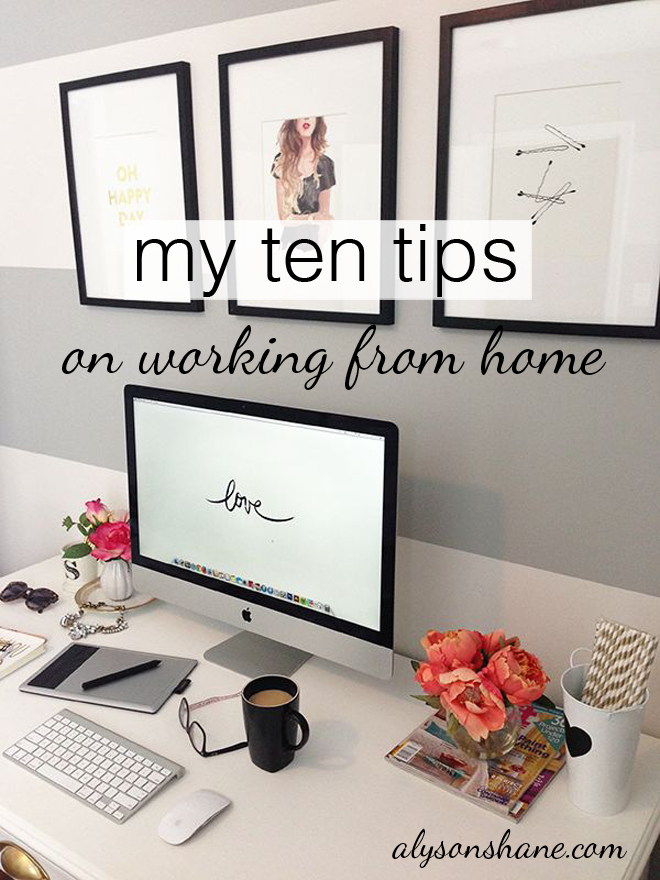
1. Get dressed every day
Every morning I get up with John, shower, do my makeup as though I'm about to leave the house, and get dressed. There's something about going through my regular hair/makeup/clothes routine that puts me in a better mindset to start working.
I've tested this theory a few times on purpose and find that I slack off, dilly-dally, and otherwise procrastinate way harder when I'm wearing my yoga pants and a tank top than when I've got on an outfit that I'd wear in an office. I don't dress business casual (never really have, to be honest) but even jeans and a t-shirt make a huge difference.
2. Have a designated work area
Though my "work area" is technically in a shared living space - namely, the living room - I have a desk setup with my iMac, notebooks, and etc where I sit when I'm working. I make a point to only use my iMac for work-related stuff whenever possible; I find that having a mental divide between being on my laptop and sitting at my desk helps tremendously with my productivity.
I've also tested this theory quite a bit, and discovered that when I was sitting on the couch with my laptop I was was less productive - maybe it's because my couch is so comfortable, or because Toulouse likes to sit on my keyboard, but whatever it is, having a designated workspace puts me in "work" mode.
3. Set "work hours" and stick to them
This point plays into my earlier point about having a "space" for work. While the nature of what I do requires me to be available 24/7 to manage my client's communities, respond to questions and etc, I have "office" hours between approximately 8am - 5pm each day where I handle the bulk of my content creation, scheduling, copywriting, responding to and on-boarding clients, and working on prospective accounts.
I'm lucky that John leaves for the Campfire office each morning, which I think helps add a pronounced "start" and "finish" to my days (I generally stop working when he gets home) but this is something that I think everyone who works from home should implement for themselves as well. It's that much easier to put work down and not get sucked into working 24/7 when you have a definite start and end time during the week.
4. Get outside
I didn't fully appreciate how much stimulus I got during my commute to and from my 9-5 back when I was working in an office, and adjusting to being home alone five days a week has taken some serious getting used to.
I've coped in a few ways: when it's warm I sit outside with my laptop on the deck, I go to the gym in the mornings which means I can either walk or take the bus with John, and I frequently step out during the day to run errands like grab coffee and get groceries so I don't feel so cooped-up. Even just walking to Thom Bargen, grabbing a coffee and having a short chat with a barrista is enough to help me feel social.
5. See your friends
Friends, and being social, matter so much more when you spend most of your time by yourself. This is a pretty obvious statement, but when you spend the majority of your time alone it's easy to feel like you're disconnected from the world, and simply having the opportunity to talk to people face-to-face who aren't clients starts to become so much more valuable.
Obviously I hang out with John every day, but I also see at a handful of my friends a week, whether it's for coffee dates, gym workout sessions, or just grabbing a pint together after we're both finished work. Having the opportunity to unwind and talk about my work, challenges, and successes with others matters so much more when you're workin' it alone most of the time.
6. Take advantage of your flexibility
One of the best parts about being your own boss is being able to set your own schedule, and adapt it to what best suits you. Understanding when you're most productive and building your schedule to best suit your workflow, instead of being expected to be "on" consistently between specific set hours, is an important part of this process.
For example, nowadays I'm able to go to the gym in the mornings. Back when I worked in an office, even though I started at 9am it was still too tough to get to the gym, work out, shower and make it to the office in time. Nowadays when I hit the gym I'm usually back home around 10am, which is totally fine because I'm much more productive in the afternoons than I am in the mornings, anyway, and I work with added energy and focus because I just came in from working out.
I don't do this every day, and I'd say that my days are pretty 50/50 where I'm out doing errands or going to the gym before/after work, and ones where I'm parked at my desk all day long, but having the option for variety really helps. It means that I can optimize my time to get things done at my own pace and schedule without worrying about a boss who is going to judge me from being away from my desk.
7. Be smart with your money
When I was working at my 9-5 I barely checked my bank balance, but now that I work from home I look at my bank account every day. I also have to track stuff like General Sales Tax (GST), my RRSP contributions, my business expenses, and my taxes.**
I've found that not having a steady paycheque coming every two weeks like clockwork has changed the way that I think about money, and I actually like that it's made me more aware of how much money I have at all times. I also think about the value of my money differently - I'm more prone to spend it on experiences, rather than stuff. I'm also lucky that my idea of "going out" usually is limited to going to a pub somewhere, having a pint with a friend, and hanging out, rather than going for an extravagant meal.
Either way, it's important to realize the ways that working from home, and the feeling of wanting to "get out" affect how you think about the money you've got in the bank. Be as frugal as possible without neglecting yourself and your social life.
**For the love of god people, always keep your taxes in a separate account so that you can pay your taxes when you get your assessment. Don't screw yourself over!
8. Eat healthy
I've never really been one of those people who kept snacks at the office, but now that I work at home and my refrigerator stocked with tasty food is literally in the next room, it's often really hard to resist the temptation to wander over and start munching away. This is especially true when I'm procrastinating, or working through a problem or idea.
As a result, I try to have tasty snacks like pickled veggies, olives, bananas with peanut butter, and cheese and crackers around. I can "graze," procrastinate or think, and not feel guilty about inhaling a loaf of bread by accident.
9. Keep your workspace clean
I'm a neat freak anyway so this goes without saying for me, but it's easy to let the rest of your life clutter into your workspace and feel overwhelming. Especially when you work from home, saying "oh, I'll tidy my desk" can quickly snowball into tidying up multiple rooms (trust me, this has happened.)
I always remove my coffee thermos, plates, and any unnecessary papers from my desk at the end of the day so that the next morning I can return to it and not feel overwhelmed with having to clean up my mess in addition to getting my work done.
10. Use a to-do list
I've blogged about my checklist before, but I wanted to mention it again because when you work from home you're only accountable to yourself. In an office we try to keep our Reddit browsing or tweeting to a minimum, lest we get caught and subsequently reprimanded by our overseer, but it can be that much easier to get distracted, or feel overwhelmed without a looming presence directing you with what to do next.
Sure, I have a multitude of bosses in the form of clients, but day-to-day they don't really care how I spend my time, as long as I'm doing what I need to do (which is so liberating, you guys.) I could write a blog post at 2am and go shopping the next day and nobody would blink an eye.
While that kind of freedom is really incredible, it also means that I have to make a point to stay accountable to myself each day since I don't have a single boss breathing down my neck. Having a checklist, which I refer back to both daily and weekly, helps a lot.
Do you have any tips for working from home? I'd love to hear them! Leave them in the comments or tweet at me on Twitter!
